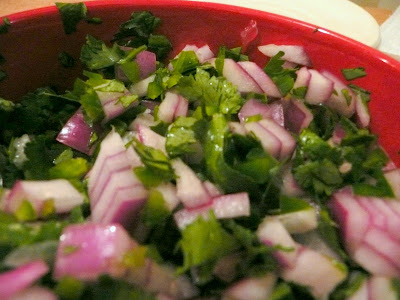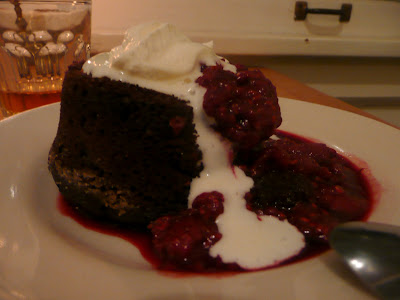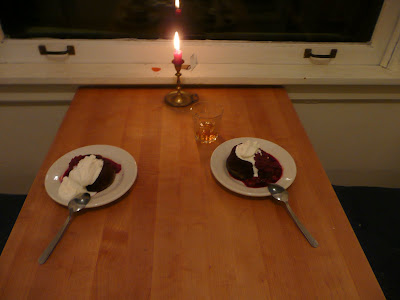Spring, right?
But the clearest sign is that last weekend was the first Farmer's Market of the season - I think winter is on its way out. I neglected to bring my camera along, but I'll try to at some point in the coming weeks, to explore the beginning of the Market, as opposed to the end.
Pickings were a little slim, yet: leeks and potatoes and radishes and rhubarb were the main players. (Despite their appearances at the grocery stores, asparagus and strawberries have yet to make their proper entrance).
I nearly missed the real prize, only catching it on our way towards the streetcar. I happened to glance over at the fish stall on the way by and spotted these, one of my absolute favourite things to eat in the entire world:
That's right. It's a clam.
I have something of a childhood fondness for clams. This might seem strange, what with my apparent ties to the desert and New Mexican food. But I was born in the Bay Area, and got my introduction to good food early on. There's a place in San Francisco, across the bay from where my family lived, called Tommaso's North Beach. I don't remember much about it - just a downstairs entrance and a somewhat cavernous dining room... but I remember eating clams with white wine and garlic and loving every single bite.
We loved every single bite of these, too. The sauce is basic - a fragrant broth of white wine, plenty of garlic and a sprinkling of chile flakes and a little lemon juice at the end. Don't bother with utensils - the clams are best right out of the shell - and make sure you have plenty of good bread on hand to soak up the juices. (You can wash your hands later - trust me, it's worth it).
Steamed Clams with White Wine and Garlic
Serves 2, if you both like clams and this is the extent of your dinner.
First, a note on storing/cleaning clams: Whatever you do, make sure your clams can breathe! Put them in a bowl and cover them with a damp towel and store them in the fridge. An hour or two (or more, depending on how sandy they are) before you plan on cooking them, soak the clams in a bowl of cold water in the fridge to clean them. Drain before using. If their shells are very dirty, scrub them with a vegetable brush.
2 pounds hardshell clams
1 cup white wine
2 tablespoons olive oil
1 tablespoon minced garlic (a couple of large cloves)
a couple of generous pinches of chile flakes (enough for a tiny bite)
the leaves from a couple of sprigs of thyme (you could omit this, I had some on hand - didn't think it was especially noticeable, but I have this thing for adding thyme to anything and everything)
juice of 1/2 lemon
salt, freshly ground black pepper to taste
bread, for serving
Over medium heat, in a large, deep skillet, combine olive oil, garlic, chile flakes and thyme and cook, stirring occasionally, just until the garlic begins to colour. This will only take a few minutes. Add the clams and increase the heat to medium-high, stirring constantly, for about a minute. Add the wine, cover the skillet and cook, shaking the pan occasionally, until all (or most) of the clams have opened. (The heat you use may actually vary from stove to stove - my electric stove is terrible and treacherous and slow to change, so I usually stick closer to medium-high. High is a little scary.)
Using a slotted spoon and working quickly, scoop the clams out of the pan and into bowls. Turn the heat up to high and add the lemon juice, salt and freshly ground black pepper. Let the sauce boil for a few minutes and reduce slightly, then pour it over the clams.
Serve, with plenty of bread and napkins, and a bowl for the shells.
































